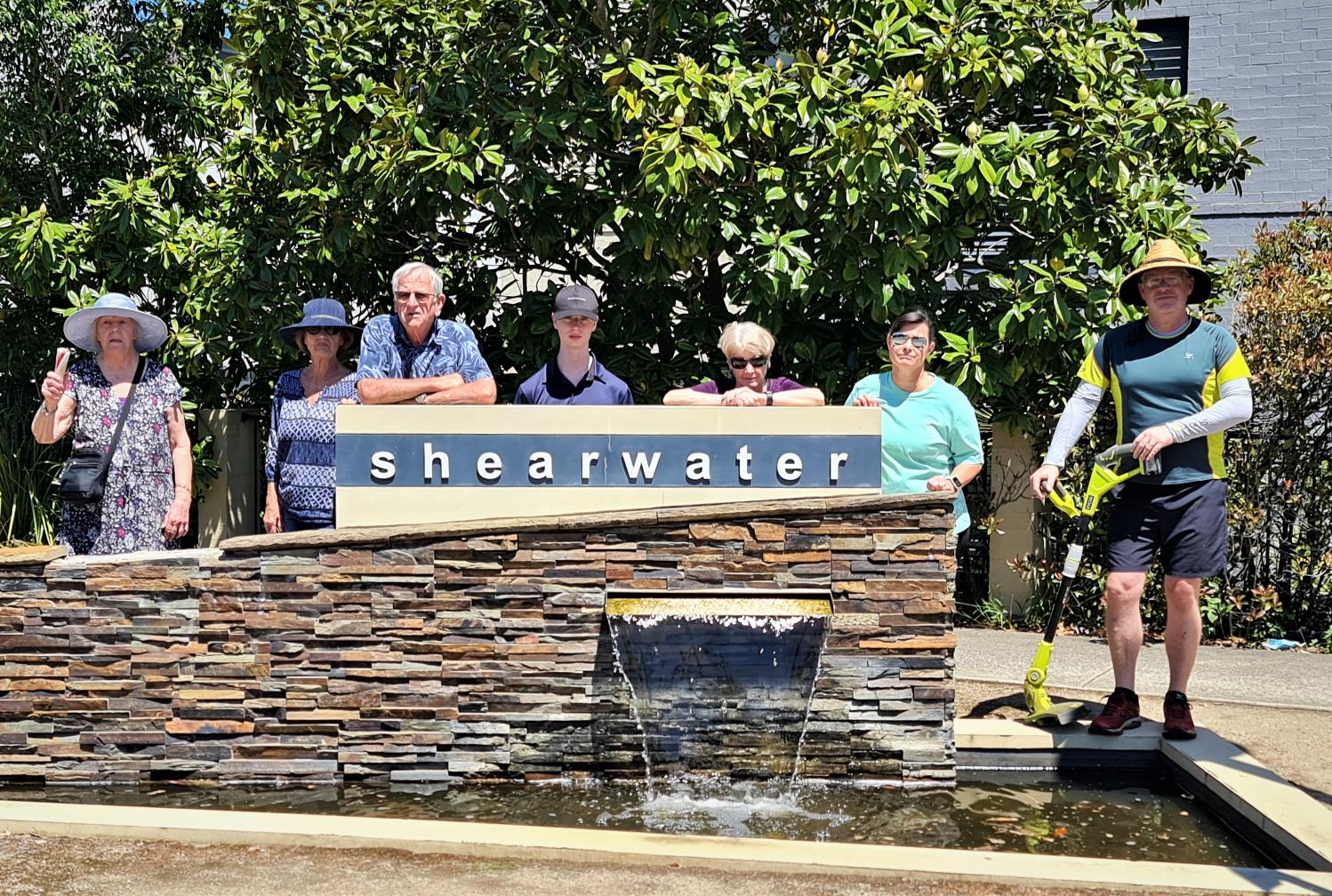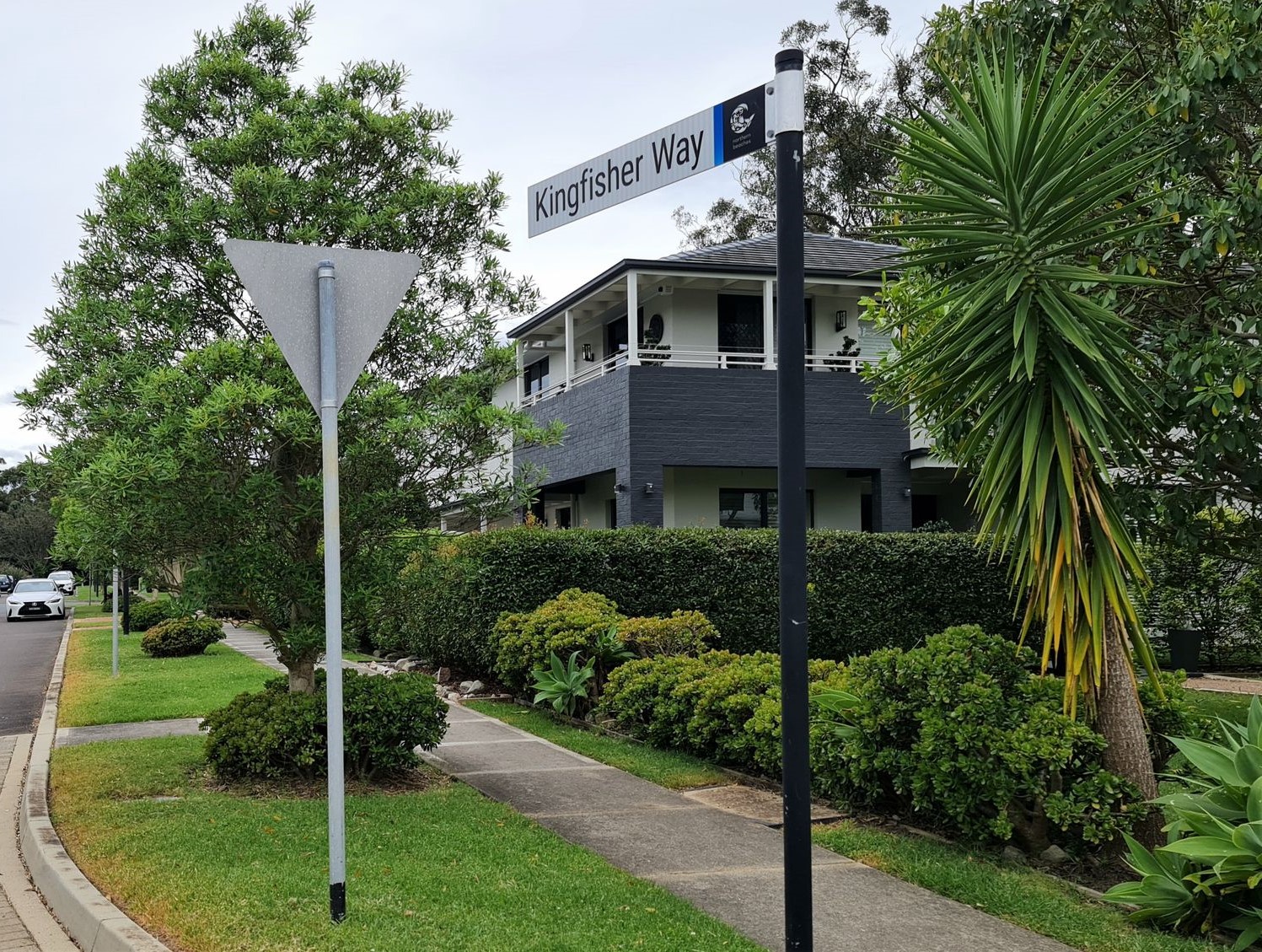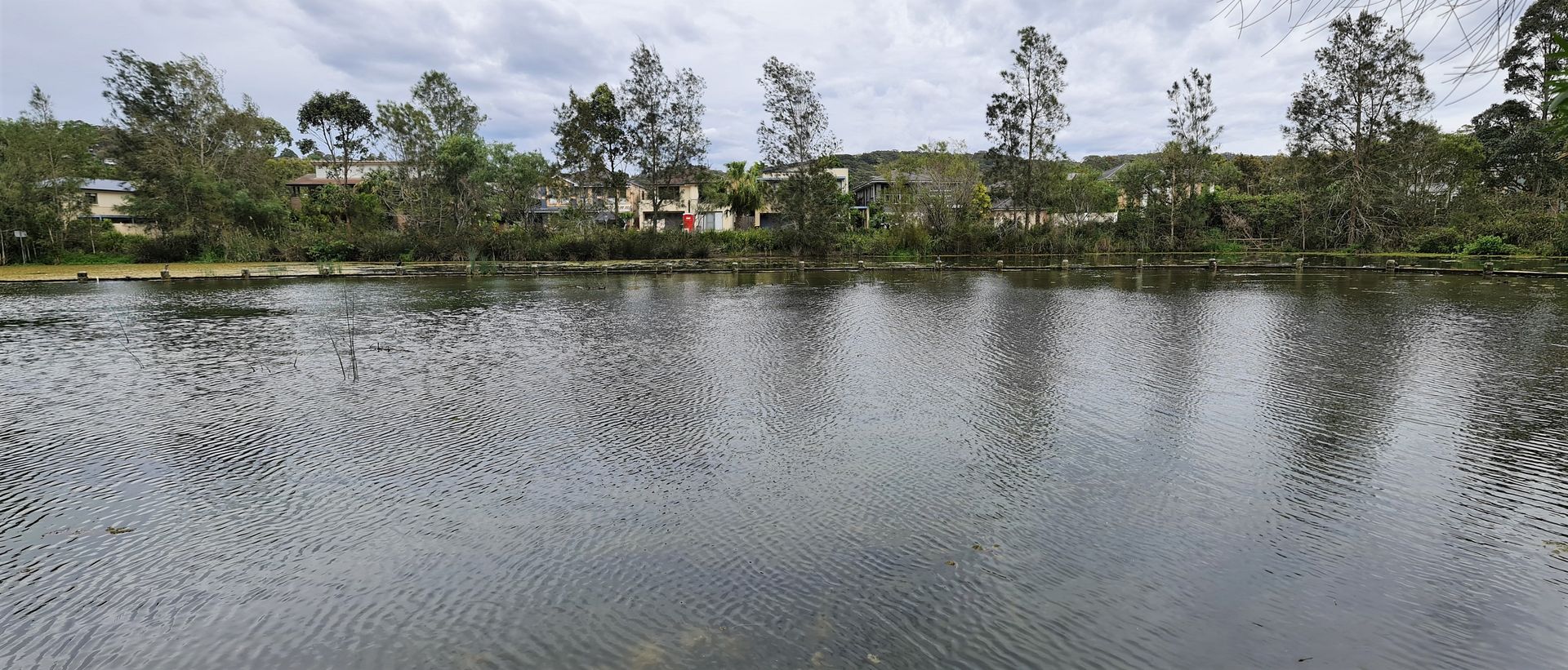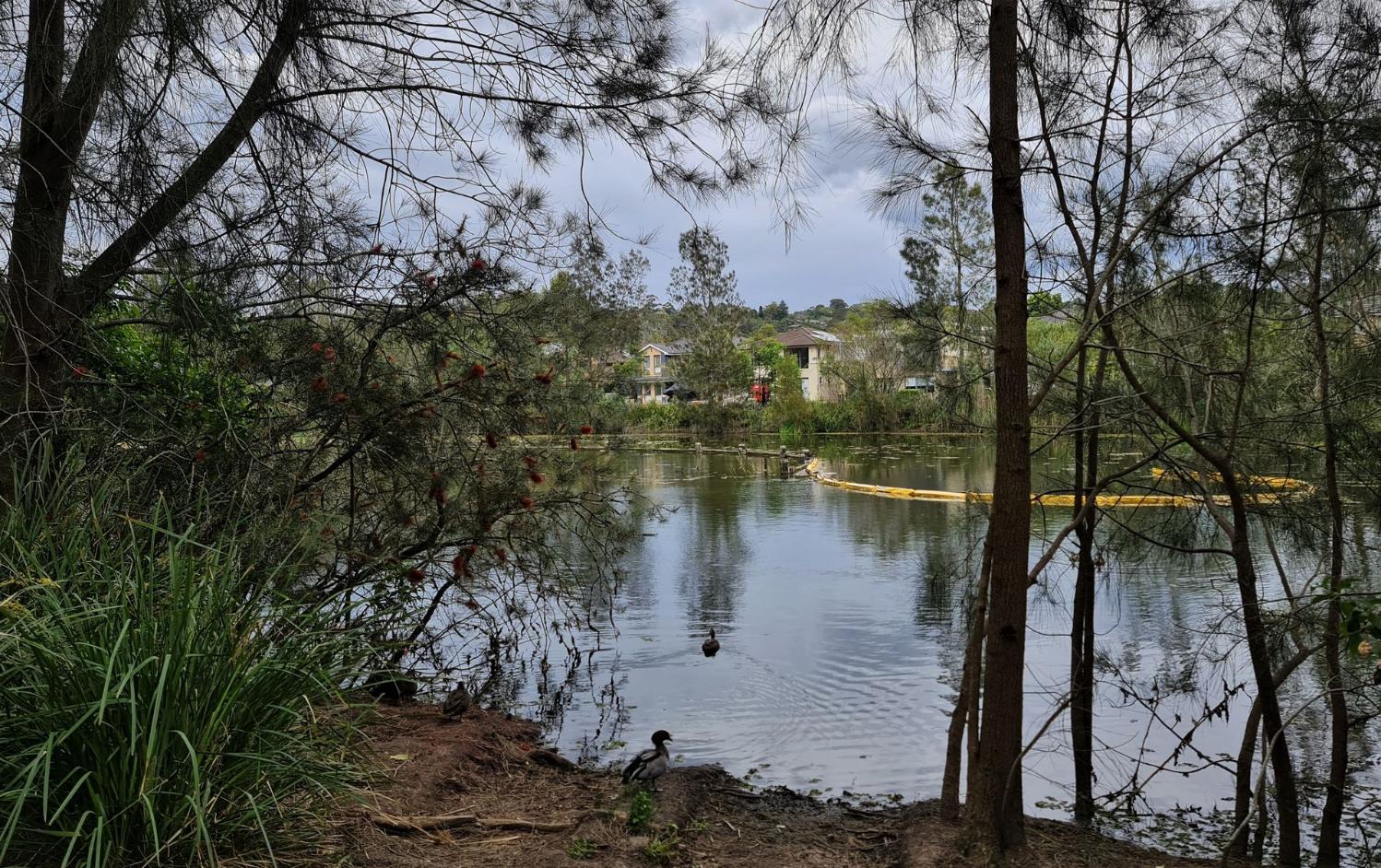shearwater estate residents paying a lot more for a lot less: unfairness embedded the Local government Amendment act 2021 council 'fairer rating system'

Shearwater Warriewood residents are currently paying two lots of fees for the same thing but only receiving it once - one as part of being in an estate with a Community Title and atop that they also pay full Council rates. Such arrangements have grown across Sydney where owners of homes in estates such as these find they are paying twice for the same thing and only receiving it once.
Those outside of these estates pay Council rates and see their verges and park areas mown or have council staff or contractors coming to collect fallen branches after storm events.
Those within these estates are paying the estate to have the grass verges mown, and paying to have the branches taken away - and then they pay the Council for the same - but don't get those same services.
The main issue arising from this is the definite sense of unfairness (and discrimination some state) of home owners of one estate (Shearwater Estate) paying different rates, and getting different services to the home owners of an adjoining estate (Fernbrook Sanctuary Estate).
Fernbrook Sanctuary was one of the first big developments of Warriewood Valley about 25 years ago. They are freehold title, and pay one set of rates, and get all the services required from Council. There are about 155 homes in the estate.
In contrast, Shearwater Estate was developed about 20 years ago. The residents own their homes and land as freehold title, but the rest of the estate is Community Title run by an Executive Committee. Because the estate is large, and the executive committee members are home owners and unpaid volunteers, the residents have hired a Body Corporate company to run the body corporate administration. They now pay full Council rates, and only get garbage collection for the same amount rates paid by Fernbrook Sanctuary.
''This is very unfair.'' the Shearwater Estate residents have said
Additionally, the residents have to pay Body Corporate fees (amounting currently to about the same as our current Council Rates), plus additional Special Levies to cover repairs, maintenance, replacement etc. of the following:
- Grass mowing - benefitting Council as this is one cost they don't incur
- Weed control - benefitting Council as this is one cost they don't incur
- Tree control, trimming and removal - benefitting Council as this is one cost they don't incur
- Kerbing and gutter maintenance and repairs(including damage done by visitors and trucks) - benefitting Council as this is one cost they don't incur
- Street signage and replacement - benefitting Council as this is one cost they don't incur
- All street lighting maintenance, repairs and replacement (including transformers etc) - benefitting Council as this is one cost they don't incur
- All storm-water maintenance and repairs - benefitting Council as this is one cost they don't incur
- All water supply maintenance and repairs for the ponds adjacent to Warriewood wetlands - benefitting Council as this is one cost they don't incur
- All estate road seal maintenance, replacement and repairs - benefitting Council as this is one cost they don't incur
- Damage done in severe weather and emergencies (eg costs to remove fallen trees) - benefitting Council as this is one cost they don't incur
- Any other item not mentioned above (eg emergency water standpipes)
''From our perspective, the contrast is immense and very unfair. We believe one of the main reasons a lot of people left the estate was due to this extra social and cost burden.'' the residents have told Pittwater Online News

Shearwater Estate's Kingfisher Lane street sign - same council signage, at twice the price paid elsewhere
In December 2020 the State Government's consultation guide to local rating reform, ''Towards a fairer rating system' noted the Local Government Act 1993 prevented councils from applying different residential rates on properties within a single 'centre of population'.
The Government noted:
Currently, the Act prevents councils from applying different residential rates on properties within a single ‘centre of population.’ This is difficult to apply in practice and has effectively prevented councils in urban areas, like Greater Sydney, from setting different rates in different locations across their local government area, as occurs in regional and rural NSW.
Given this, IPART recommended councils be able to set different residential rates in contiguous urban areas, but only where there is on average, different access to, demand for, or cost of, providing services and infrastructure. It proposed that councils use geographic markers to define these areas, including postcodes, suburbs, geographic features (e.g. waterways, bushland) and/or major infrastructure (e.g. arterial roads, railway lines).
The Government believes that councils should be able to explore different options to distribute the rating burden more equitably, in consultation with their communities, and supports enabling greater use of differential rating in urban areas. It supported these recommendations ‘in principle’.
The Local Government Amendment Bill 2021 was passed by the NSW Parliament on May 13th 2021 and assented to on May 24th, 2021. These reforms commenced with and when the assent occurred.
On October 15th 2021 a regulation was published to specify a factor to limit the highest ordinary rate that may apply where separate rates are set within a contiguous urban area.
A newer document, 'Local Government Amendment Act 2021 - Guidance on local government rating reforms, April 2022' states 'Four rating reforms took effect immediately on 24 May 2021 and provide options that may already be taken up by councils' one of which was
3. Urban residential rating subcategories – allowing all councils to set separate rates for different residential areas within a contiguous urban area, in certain circumstances, whether or not they have different ‘centres of population’
However, this document further states that:
For the purpose of setting different rating subcategories for residential land, ‘contiguous urban area’ has not yet been defined by any regulation or Ministerial Guideline. This may however capture a portion of an area that is urban in nature and comprises residential land where the properties within that area, taken together, are not entirely separated by land that falls within other rating categories.
Councils are required to use geographic names published by the Geographical Names Board to objectively define different residential areas to which to apply different residential rates, rather than being enabled to simply draw ‘lines on a map’. While an alternative option may be prescribed by regulation, no regulation has been made to date.
Each council must:
• Be satisfied on reasonable grounds that it is necessary to identify residential areas because of significant differences between the areas in relation to access to or demand for, or the cost of, providing services or infrastructure – see section 529(2A) of the LG Act.
• Publish the reasons for doing so on its website as soon as practicable after making the rates, and set out the reasons in councils Statement of Revenue Policy in its operational plan for the year concerned – see section 530(7)(a) and 530(7)(b).
How this translates in Warriewood, or any of the thousands of other similar schemes across Sydney is that they are paying a lot more for a lot less - on one side of the road in Warriewood residents are paying around $4,600.00 to get their grass verges kept trim and their weeds pulled or their rubbish collected while those on the other side of the street only have to pay $2300.00 a year.
For those on one side of the street, when storms come and bring down trees, they must pay to have them taken away - while those on the other side have this service provided by the Council at no cost, apart from their rates.
However, if the WHOLE of Warriewood was 'paying double' and getting just half or less of what they're paying for, then the 'separate rates' system could be applied.
So, although it is absolutely clear that Shearwater residents are most definitely those who have 'significant differences between the areas in relation to access to or demand for, or the cost of, providing services or infrastructure' the Council is still collecting full rates from them.
The Shearwater Estate residents have spoken to and written, officially, to the Council. The Council, in reply, has pointed out that under these terms, and wording, the Council is unable to levy a different rate on these properties.
As these systems have been in place for at least 20 years in thousands of places across Sydney - which must have shown up in the State Government's inquires, consultations and discussion documents, long before the Local Government Amendment Bill 2021 was introduced, debated, specified upon, amended, passed by both houses of the NSW Parliament and then assented to - you have to wonder why this obvious form of unfairness and discrimination has not, as yet, been addressed.
The progress towards a 'Fairer Rating System' has failed those living in these estates - they continue to pay twice as much for much much less - there are thousands of people across Sydney being double charged in this way.
Residents of Shearwater Estate have advised Pittwater Online News that they will be speaking to their local State MP, The Hon. Rob Stokes.
The information provided by the NSW Government's Office of Local Government on the Commencement of Local Government Amendment Act 2021 runs below.

Shearwater Estate ponds aeration and maintenance is paid for by their residents - a contrast to those in nearby/adjacent Warriewood wetlands, which they and other residents across the LGA are also paying for but seeing deteriorate with weed infestations
Commencement of Local Government Amendment Act 2021 (May 2021)
What’s new or changing
- The Local Government Amendment Act 2021 (Amendment Act) was passed by the NSW Parliament on 13 May 2021 and has come into effect, although some reforms will commence by proclamation, as indicated below.
- This Amendment Act includes reforms to ensure a fairer and more flexible rating system for councils and ratepayers, councillor superannuation and minor changes that relate to council elections and the terms of office of chairs of county councils and joint organisations.
What this will mean for your council
- Councillors, general managers and staff should familiarise themselves with the key reforms in the Amendment Act, with a particular focus on those changes that came into effect on commencement, as outlined below.
- Councils created by merger in 2016 that have yet to harmonise their rating structures have more flexible options for their rating structures, including the option to harmonise rates gradually over up to eight years. See key points for merged councils below.
Key points
- The Government remains committed to strengthening the performance and sustainability of local government, including councils created by merger in 2016. The Amendment Act delivers key reforms to achieve these outcomes.
- Rating reforms will ensure councils have a stable and reliable revenue base, provide greater flexibility for councils and ratepayers, enabling a fairer distribution of the rating burden. This implements key elements of the Government’s response to the Independent Pricing and Regulatory Tribunal’s (IPART’s) review of the local government rating system.
- The Amendment Act will be subject to a Statutory Review within 2 years.
Key points for merged councils
- Importantly, the Act now provides greater flexibility for those councils formed in 2016 as they prepare to harmonise rates from 1 July 2021. These councils can choose, in consultation with their communities:
- to harmonise their rating structures gradually over up to eight years – councils that take up this option must apply no more than 50% of the total increase in rates for each rating category over the period, in any year;
- to set separate rates for different residential land within a contiguous urban area, like Greater Sydney and the Central Coast; and
- to set separate rates for farming land based on geographic location.
- It is a matter for each merged council to determine whether or not to take up one or more of these options as they develop a rating structure for their area.
- The Amendment Act also provides a process for councils constituted within the last 10 years to submit a business case with supporting reasons to the Minister for a de-amalgamation of an area. Further information on this process will be provided separately.
Key points about rating changes for all NSW councils
- Changes to improve flexibility for residential and farmland rates can also be used by all NSW councils.
- Councils are able to set different residential rates within a contiguous urban area and can choose to set different rates for farmland based on geographic location. These provisions commence on assent.
- Councils will be able to set business rates based on whether the land is predominantly used for industrial activities. This will commence by proclamation.
- A new rating category for environmental land will be created for land where meaningful development is constrained by geography or regulation that imposes significant restrictions on use, such as conservation agreements. This provision will commence by proclamation, once regulations are made.
- The Act now clearly allows for multiple rate pegs to be set, if required, as part of limiting councils’ general income each year. This will enable the Government to deliver on its commitment to align councils’ general income to population growth in future to help relieve pressure in growing communities. This provision commences on assent. IPART will recommend a proposed rate peg methodology to the Minister.
- To reduce red tape, the Act will allow councils to levy a new kind of special rate for infrastructure jointly funded with other government entities. These special rates are not limited to funding council functions and resulting income does not form part of councils’ general income under the rate peg. This provision will commence by proclamation, once regulations are made.
- The Act also allows for regulations to be made to specify circumstances under which the rating exemption for land subject to a conservation agreement may be removed. This will not commence until regulations are made following consultation with key stakeholders to ensure incentives for land conservation remain in place.
- The Act will provide any councils that provide water and sewerage services and levy special rates for that purpose with discretion about whether to exempt certain properties from those rates.
- Limits will be placed on ratepayers eligible to postpone rates due to a change in the permitted use of their land. This will still allow owner occupiers who would face hardship to apply to council for a postponement of the portion of their rates that have increased due to rezoning.
Key points about other changes
- Councils will have the option to make superannuation contribution payments for councillors from 1 July 2022 equivalent in amount to superannuation guarantee payments. The decision to make superannuation contribution payments must be made by resolution at an open meeting.
- Minor amendments have been made to allow the time for the receipt of postal votes to be prescribed by regulation and to allow greater flexibility for the NSW Electoral Commission and other electoral service providers in the administration of countbacks to fill vacancies.
- The term of office of chairpersons of county councils has been extended to two years, aligning it with the terms of office of mayors elected by councillors and chairpersons of joint organisations. Technical amendments have also been made to clarify that the terms of chairpersons of county councils and joint organisations expires on the election day of their member councils.
- Further rating reforms that do not rely on the Amendment Act will be implemented by making changes to regulations and releasing new guidance later this year. (2021 statement)
- In part, this includes aligning rating income growth with population growth to help councils provide for growing communities within the rate pegging system while still protecting residents from sudden and excessive rate rises.
- To give effect to this commitment, the Minister has asked IPART to recommend a proposed rate peg methodology that allows the general income of councils to be varied each year in a way that accounts for population growth.
- IPART has been asked to ensure that councils with lower population growth are not disadvantaged, to undertake public consultation and to provide a final report by September.
- There is no change to the requirement for councils to pay an annual Emergency Services Levy (ESL) contribution from within councils’ general income.
Where to go for further information
- The Local Government Amendment Act 2021 is available at https://www.legislation.nsw.gov.au.
- The Government’s response to IPART’s review of the local government rating system is available at www.olg.nsw.gov.au/wp-content/uploads/2020/06/IPART-Rating-Review-Government-Response.pdf
- IPART’s final report on the local government rating system is available at www.ipart.nsw.gov.au/Home/Industries/Local-Government/Reviews/Local-Government-Rating-System/Local-Government-Rating-System
